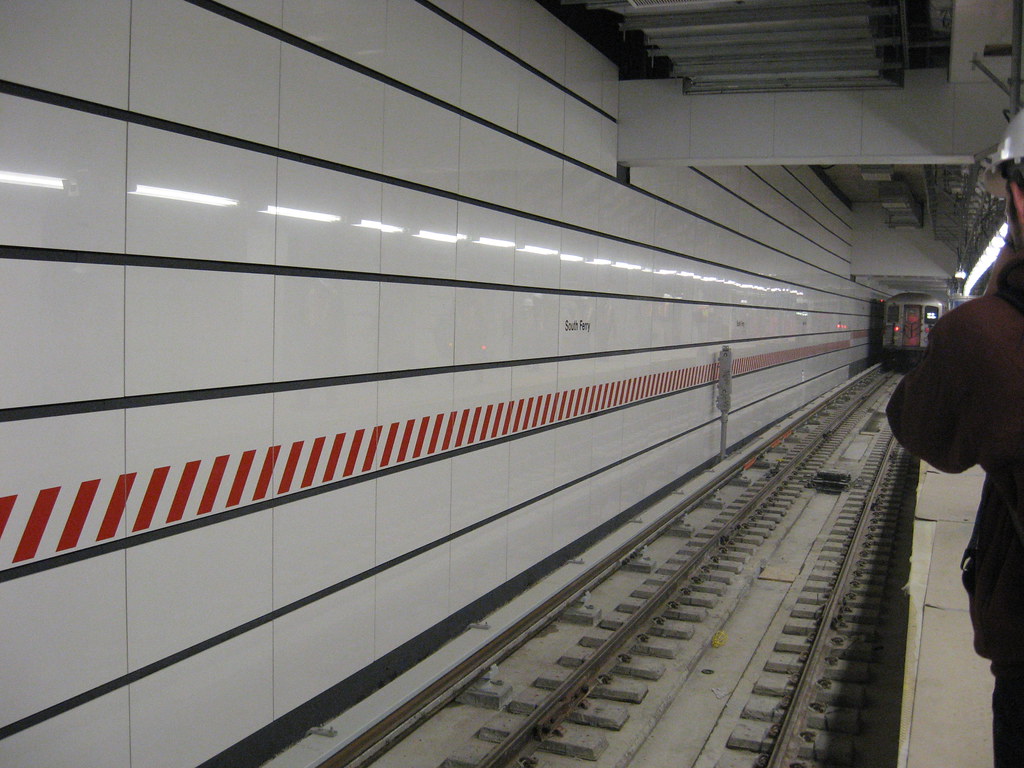 These days, the MTA’s federal stimulus grants have become hot topics of conversation. Some would prefer to use the legally permissible 10 percent siphoned from the stimulus grant to help cover the ever-widening operating deficit. Others don’t feel comfortable taking money away from the also financially distressed capital budget. But what if the money isn’t being spent?
These days, the MTA’s federal stimulus grants have become hot topics of conversation. Some would prefer to use the legally permissible 10 percent siphoned from the stimulus grant to help cover the ever-widening operating deficit. Others don’t feel comfortable taking money away from the also financially distressed capital budget. But what if the money isn’t being spent?
According to a report issued recently by the New York Building Congress, few of the city’s $1.57 billion in transportation stimulus funds have spent. In fact, the city itself has spent only $857,000 of that money, and while the MTA has spent more of its allotted dollars, spending is far off pace. Of the MTA, the NYBC said:
According to the State Comptroller’s figures, the MTA has spent $39,000 of stimulus funds on a bridge replacement on South First Avenue over the MetroNorth Railroad. Approximately $10.9 million is earmarked for this project.
At the end of 2009, no federal stimulus money had been spent on the two MTA projects slated to receive the most ARRA funds; the Fulton Street Transit Center, which is expected to receive $423 million, and the Second Avenue Subway, which has been approved for $276 million.
According to MTA, the agency has been allocated a total of $1.075 billion in ARRA funds and has awarded contracts worth $886 million. However, the MTA acknowledges that just $14 million has been spent to date.
This data underscores a point I’ve made about the stimulus grants in the first place. Generally, shovel-ready projects were mostly funded, and the MTA — along with many other state organizations — used its stimulus dollars to cover project deficits. NYBC’s head echoed this sentiment.
“As New York City nears the first anniversary of federal stimulus legislation, we remain greatly concerned about the slow pace of capital spending on transportation projects,” NYBC President Richard T. Anderson said. “Virtually all of the stimulus money spent and received to date has been devoted to programs designed to lessen the impact of the economic downturn on individuals, bolster the operating budgets of local governments, or fund small-scale construction projects. While such spending is important, it does little to stimulate the broader economy, create new jobs and prepare the region for renewed growth.”
So what is to be done? If anything, this latest development strengthens the case for the Russianoff Plan. Congress passed the stimulus money in order to stimulate the economy, and an operating budget crisis at the MTA will lead to job losses that we as a city would prefer to avoid. If those federal dollars can be used to avert some cuts and some staff reductions, then, the money would be going to good use. Of course, some of the payroll fat at the MTA deserves to be cut, and some of the efficiency-based service changes should be implemented anyway. As of now, though, this money is just sitting there.
I’m still not on board with the Russianoff Plan, but I can see where this debate is leading. Eventually, the MTA, faced with a huge debt and a pile of unused cash just sitting there, will take some of the stimulus funds from projects that, in a few years, will need more money. The economics of it all just keep getting more and more muddled as time goes on.

 Those in charge of the MTA must be really glad Wedneday is over for it was yet another bad time in the long run of bad days for the MTA finances. As we learned late in the afternoon, revised budget projections from the state have
Those in charge of the MTA must be really glad Wedneday is over for it was yet another bad time in the long run of bad days for the MTA finances. As we learned late in the afternoon, revised budget projections from the state have 

 At the end of this post is a poll about how you think the MTA should balance its budget. Scroll down or
At the end of this post is a poll about how you think the MTA should balance its budget. Scroll down or